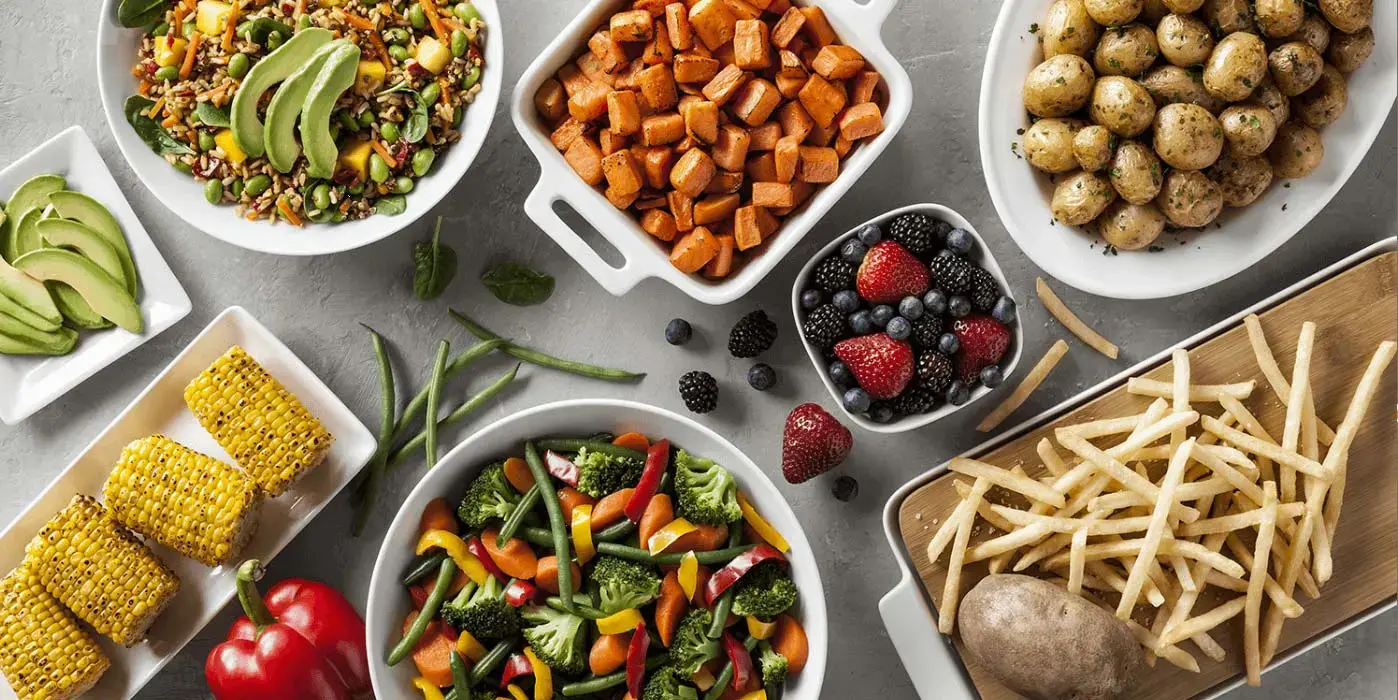Planificación de menú
Temporada de aguacate: cómo la época del año afecta los precios y la calidad
4/17/2023

Siempre es temporada de aguacates en el estado de Michoacán, México. Con más de 42 000 huertos de aguacate en elevaciones de 2 000 a 10 000 pies, es el único lugar del mundo que puede suministrar frutas enteras todo el año.
Sin embargo, incluso los mejores aguacates son producto de la madre naturaleza. Y todos los restaurantes saben que la calidad, el suministro y el precio de los aguacates mexicanos varían según la época del año, a veces mucho.
¿Por qué?
En este artículo, hablaremos sobre los factores estacionales en el cultivo de aguacate de Michoacán y cómo puedes mitigar estos altibajos para obtener una mejor rentabilidad.
Cómo se cultivan los aguacates en México
Los árboles de aguacate se cultivan en huertos, que se mantienen minuciosamente para garantizar condiciones óptimas para su crecimiento. El suelo en los huertos de aguacate se prepara con cuidado, y se monitorea de cerca el nivel de pH y el contenido de nutrientes.
Los árboles de aguacate necesitan mucha agua, y los sistemas de riego garantizan que reciban la cantidad correcta en el momento adecuado. La falta de agua puede reducir el contenido de aceite tan importante de la fruta, lo que hace que disminuya el sabor y la textura cremosos que a tus clientes les encanta.
Los árboles de aguacate tardan de tres a cinco años en alcanzar la madurez y producir frutas. Una vez que los árboles comienzan, pueden seguir dando frutos por hasta 40 años.
Los aguacates mexicanos maduran hasta ocho meses después de que se poliniza la flor y no comienzan a madurar hasta después de que se recogen. Una vez maduras, las frutas pueden permanecer en el árbol durante un máximo de seis meses antes de que se pongan feas, lo que les da a los agricultores el poder de esperar precios más altos.
¿Cuándo es la temporada de aguacates?
El terreno montañoso y el clima favorable en Michoacán proporcionan condiciones ideales para que los árboles de aguacate prosperen a diferentes elevaciones, lo que resulta en la producción de frutas durante todo el año. Los huertos de aguacate están ubicados a diferentes altitudes y se generan cuatro temporadas de floración superpuestas en todo el estado:
- Loca (cosecha de junio a septiembre)
- Aventajada (cosecha de septiembre a octubre)
- Normal (cosechado de septiembre a febrero)
- Marzena (cosecha de marzo a junio)
Loca: temporada de “frutas locas“
La temporada de frutas locas es un término que se utiliza para describir un período durante los meses de verano en México en el que los aguacates se cosechan junto con otras frutas tropicales. Si bien el momento exacto de la temporada de frutas locas puede variar según las condiciones climáticas y otros factores, por lo general ocurre entre junio y septiembre.
La temporada de frutas locas puede traer otros desafíos que pueden afectar la calidad y disponibilidad de los aguacates. Por ejemplo, las temperaturas calurosas y los altos niveles de humedad durante el verano pueden aumentar el riesgo de plagas y enfermedades, que pueden afectar a los árboles de aguacate y reducir los rendimientos.
Además, la disponibilidad de mano de obra para cosechar y empacar la fruta puede ser un desafío, ya que muchos trabajadores de la industria del aguacate pueden migrar a otras regiones de México o los Estados Unidos durante este tiempo.
Los aguacates cosechados durante los meses de verano pueden tener problemas que afecten su calidad, incluidos los siguientes:
- Quemadura de sol: cuando los árboles de aguacate están expuestos a la luz solar directa durante períodos prolongados en verano, la fruta puede quemarse por el sol. Esto puede hacer que la cáscara del aguacate se vuelva marrón o negra, y puede provocar sabores desagradables y un menor tiempo de caducidad.
- Sabor menos rico: si los árboles de aguacate no reciben suficiente agua durante los meses de verano, la calidad de la fruta puede ser mala, con un menor contenido de aceite, una textura más seca y un sabor menos rico.
- Daño por plagas: durante los meses de verano, las plagas como los ácaros y las arañuelas pueden infestar los árboles de aguacate y dañar la fruta. Los aguacates infestados pueden tener imperfecciones, sabores desagradables y pueden no ser aptos para el consumo.
Las dificultades de la temporada de frutas locas llevan a muchos operadores estadounidenses a cambiar a productos de aguacate preparados (congelados y refrigerados) durante los meses de verano
NOTA: Debido a que el alto contenido de aceite es fundamental para la satisfacción del cliente, Simplot evita comprar aguacates durante la temporada de frutas locas para nuestros productos de aguacate congelado de Harvest Fresh™. Para garantizar la mejor calidad, elaboramos nuestros productos congelados exclusivamente a partir de frutas con alto contenido de aceite recogidas en su punto máximo durante las otras tres temporadas.
Aventajada: La temporada “con ventajas“
Aventajada es la temporada más corta y se caracteriza por la floración de los árboles de aguacate en las elevaciones medias de la región. Durante Aventajada, estos árboles producen frutas que suelen ser más pequeñas que las de otras temporadas, pero con un alto contenido de aceite y un sabor rico y placentero.
Temporada normal: la temporada de aguacates más larga y extensa
La temporada de aguacates más productiva es la que se conoce como temporada normal, que se extiende desde principios del otoño hasta Febrero: seis meses completos previos al “Gran Juego“ en los EE. UU.
Temporada de Marzena: cubrir la brecha
La cosecha de esta temporada aumenta a medida que la temporada normal se desvanece, y se extiende hasta el inicio de la temporada de frutas locas en junio.
¿Por qué los aguacates enteros a veces son tan caros?
Más allá de los ciclos de crecimiento, el precio de los aguacates enteros está sujeto a varios otros factores fuera del control de los restaurantes o incluso de los productores.
- Eventos relacionados con el clima: las sequías o las condiciones climáticas extremas pueden causar daños a los cultivos de aguacate, lo que conduce a rendimientos más bajos y precios más altos. Por ejemplo, en 2021, una tormenta invernal en Texas causó interrupciones significativas en la cadena de suministro de aguacate, lo que provocó precios más altos y escasez de frutas en algunas áreas.
- Disputas comerciales: en 2019, por ejemplo, EE. UU. amenazó con imponer aranceles a todas las importaciones mexicanas, incluidos los aguacates, para presionar a México a reducir la cantidad de migrantes centroamericanos que ingresan a los Estados Unidos. La idea de estos impuestos hizo que los precios del aguacate se elevaran, ya que los importadores se apresuraron a almacenar aguacates antes de que los aranceles entraran en vigencia.
- Disputas y huelgas laborales: En 2019, una huelga laboral en Michoacán causó una caída significativa en la producción de aguacates, lo que hizo que los precios se dispararan. La huelga finalmente se resolvió, pero no antes de causar interrupciones significativas.
Cómo usar productos de aguacate congelados para protegerse contra el aumento de precios
A todos les encanta un buen aguacate, pero la variabilidad en la calidad, disponibilidad y precio de los aguacates frescos puede ser un desafío costoso para los restaurantes que los ofrecen con regularidad.
Por otro lado, los productos de aguacate congelados como la pulpa, el guacamole y la fruta cortada de Simplot Harvest Fresh™ eliminan muchos de los problemas de los frescos gracias a lo siguiente:
- Precios consistentes y disponibilidad durante todo el año.
- La calidad de los aguacates 100% mexicanos Hass perfectamente maduros escogidos solo en temporada alta.
- Menores desperdicios y gestión de inventario más simple gracias a un tiempo de caducidad de 18 meses.
- Preparación simple para descongelar y servir que reduce los costos de mano de obra.
- Preparación más segura para mano de obra menos calificada: no se requieren cuchillos.
- Sostenibilidad: reutilizamos los huesos y las cáscaras generadas durante el procesamiento. Nada va al vertedero.
Incontables aplicaciones para menús, como coberturas de sándwiches, guacamole, tazones, batidos/bebidas, aderezos, salsas, productos horneados, etc., no requieren aguacate fresco. El congelado es la opción perfecta durante todo el año en artículos donde el aguacate sirve como ingrediente en una receta más grande. Esto te permite guardar los aguacates frescos para platillos en los que el sabor y la textura frescos son el centro.
Además, muchos operadores combinan productos de aguacate frescos y congelados en el mismo artículo, como en el guacamole, para disminuir la volatilidad en los costos de los alimentos sin renunciar a los frescos por completo.
No importa cómo los uses, con los productos de aguacate congelados de Simplot Harvest Fresh™ siempre es temporada de aguacate. Obtén más información sobre los productos Harvest Fresh™ para el foodservice.
- Beneficios de lo congelado
- Colegio y universidad
- Delicatesen
- Desde la cocina de prueba
- Entrega
- Festividades
- Historias de cocina
- K-12
- Mano de obra y personal
- Mercadeo
- Minorista
- Noticias
- Papas a la francesa
- Planificación de menú
- Productos nuevos
- Recursos sobre la Covid-19
- Restaurante de servicio completo
- Restaurante de servicio limitado
- Sostenibilidad
- Tendencias alimentarias
- Trend Feast
- Vegetales
- Healthcare



